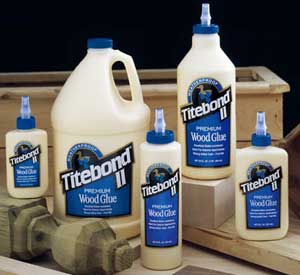
I have seen some references in your Q&As to both Titebond and Weldwood glue. Is there a preferred glue and if so, what is the determining criterion?
Michael Dresdner: There are different adhesives for different jobs. Titebond, which is a brand of PVA adhesive, is good for well-fitted wood joints that can tolerate some clamping and require a moderate open time. It is probably the most popular adhesive among woodworkers. Weldwood is a product line brand name and is owned by Dap. There are at least 18 different adhesives in the Weldwood line including contact cements and carpet cements. The two most common among woodworkers are plastic resin glue (a urea formaldehyde adhesive) and Resorcinol (a phenolic adhesive). Both are rather long open time adhesives that require no bonding pressure beyond firm contact and are commonly used for lamination and layup work. The latter of the two, Resorcinol, is both waterproof and heat resistant.
Rob Johnstone: This is a larger question than you might suspect…as the saying goes: I could write a book. Specific adhesives have characteristics that make them better at some tasks than other adhesives. In the July/August 2002 issue of Woodworker’s Journal, Michael Dresdner gives a great description of high-tech adhesives and what they are best for (look for it on the newsstand around 7/2/2002). For most furniture making, common “white or yellow” glues are more than adequate. If you need extended open time, polyurethane or epoxies are good options (both happen to be quite water resistant as well). If you would like to glue something together and would like it to last, say 300 years, what would you choose? To my knowledge, the only product that is proven over that period of time is hide glue (a favorite of mine). To answer your question, there is a preferred glue, but it depends on the task at hand.







